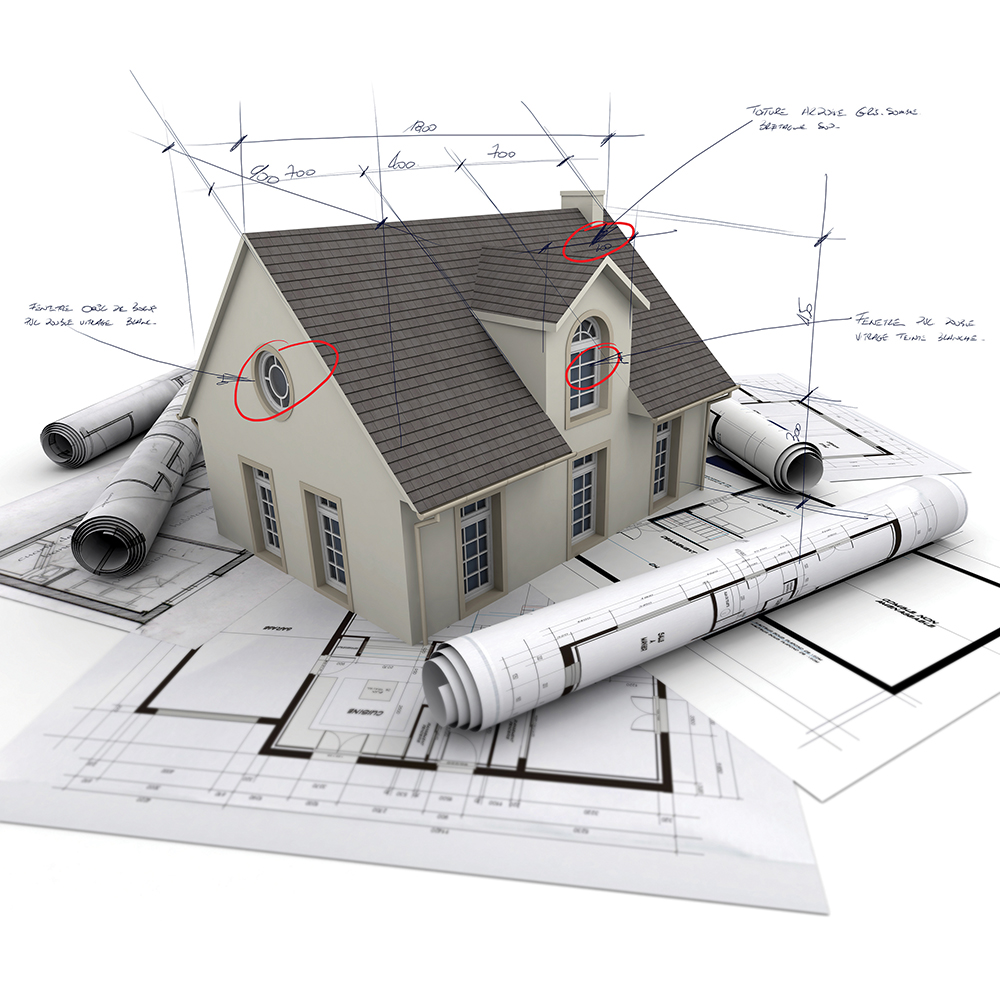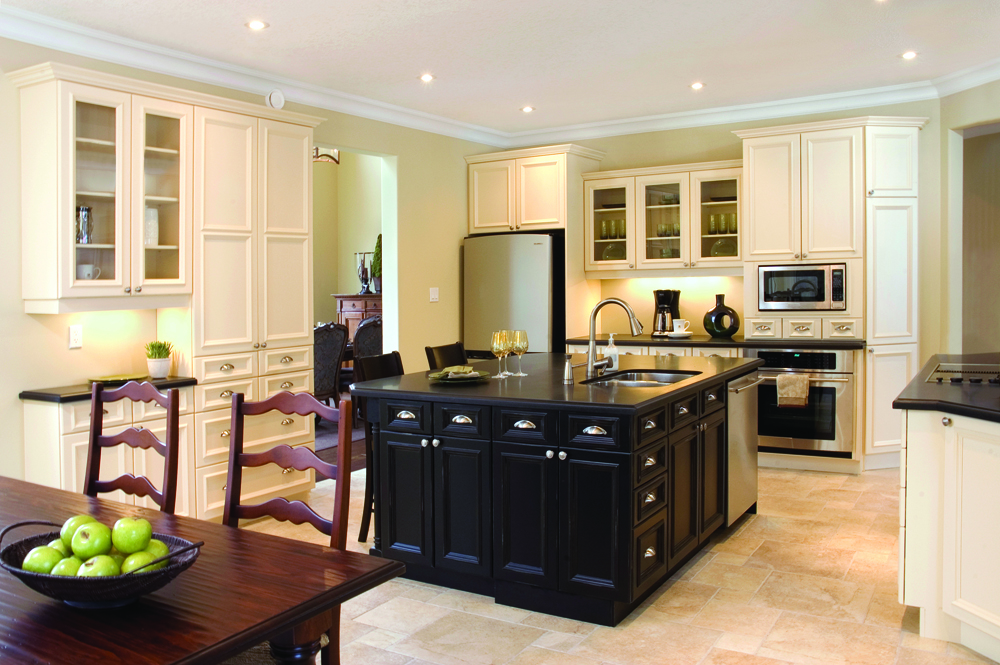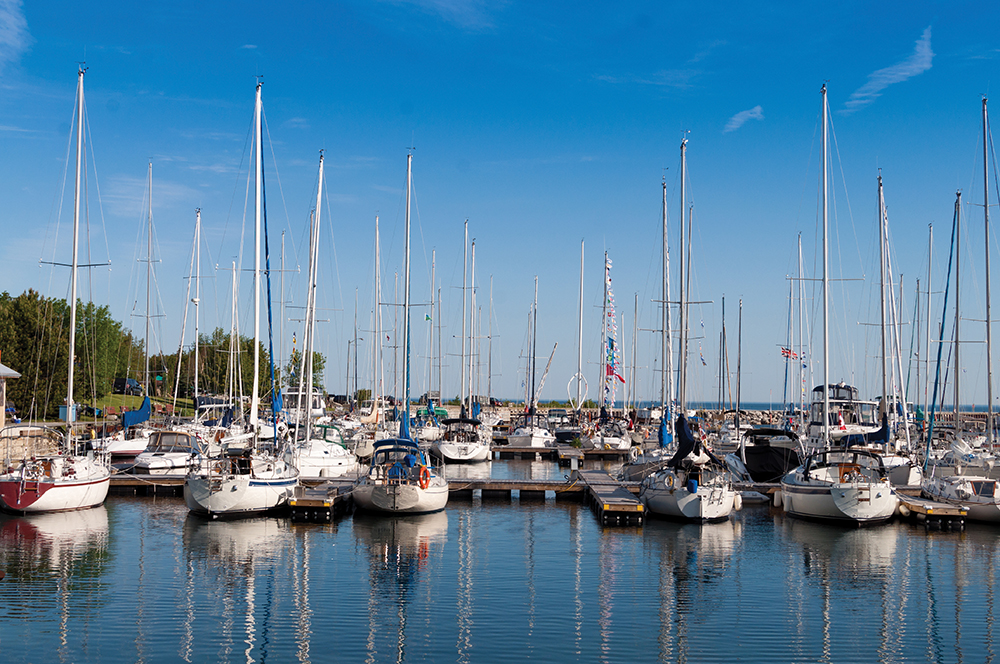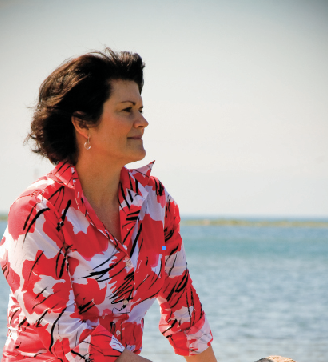Custom home building in Southern Georgian Bay continues on a grand and elaborate scale, although a trend towards smaller, well-designed residences is taking root
by Marc Huminilowycz
photography by Kristie & Brenden Woods
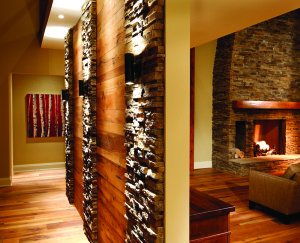 While the new and resale home markets showed strong results in 2013, perhaps the most significant indicator of the health of Southern Georgian Bay’s real estate market is the ongoing number of buyers choosing to build high-end custom homes in our region.
While the new and resale home markets showed strong results in 2013, perhaps the most significant indicator of the health of Southern Georgian Bay’s real estate market is the ongoing number of buyers choosing to build high-end custom homes in our region.
Some are opting to build their dream home on serviced residential lots, while others are building on the waterfront or in the countryside. Whatever the location and lifestyle, local architects and custom homebuilders are keeping busy making dreams come true.
On The Bay recently interviewed four local designers and builders to learn about the latest trends in custom homes – size, design, techniques and clientele. Unanimously, all agreed that their primary clients are urban baby boomers and younger families building modern homes to accommodate their active lifestyles now and for generations to come.
Demographics
“There is no question that our clients are primarily retirement age. This may be their second or third residence, but here is where they plan to settle,” says James Schneider of Jasper Design. “They have worked their whole lives, and now they’re doing it right with their new homes here, using the most up-to-date materials, techniques and technology available.” Jasper Design is currently working on four properties in Wasaga Beach, including an ultra-modern riverfront home and two beachfront properties: a Craftsman-style new build and a major renovation of a 1990s home.
William Brown of Black Tusk Development Group has noticed a similar trend in his clientele. “Our current projects are driven by winter weekenders,” he says. “Their homes, used as a gathering point for family and friends, will become more permanent residences over time.” Brown does, however, see the beginning of a trend to smaller, well-designed homes.
“Some active baby boomers nearing retirement are downsizing to suit a new lifestyle that includes more travel and adventure,” explains Brown. “They still want a home with all the comforts they’re used to, but they’re also looking for a space that’s easier to maintain and can be closed up quickly when the travel bug bites. Then there is the cost factor. A smaller home frees up capital from the sale of an existing home, which can be directed towards other interests.”
Jasper Design agrees that some baby boomer clients prefer to scale down their custom home plans. Although there is an initial intent to downsize, the company sometimes encourages clients to slightly increase the size of their home to accommodate their needs, recommending energy-saving techniques such as efficient heating/cooling, extra insulation and LED lighting to keep their energy costs down.
Describing her company’s custom home projects as “multi-generational,” Holly Stone of Stone Custom Homes sees a demand towards larger homes from many of her clients, who wish to accommodate three generations of family. Recent Stone Custom Homes projects include a retirement property in Evergreen Estate, a 7,000-square-foot family chalet at Peaks Bay, a large contemporary home at Craigleith Ski Club and a retirement property in the Ridge Estates.
“In some cases, it’s baby boomers building for their children and grandchildren. In other instances, it is the children building to accommodate their parents and grandparents,” says Stone. “Their ‘away’ properties provide the greatest opportunity for family time across the generations.”
Must-Haves
Whether it is boomers or younger families opting for a custom home, all of the builders and designers interviewed agree on one point – that their clients are, for the most part, design-conscious consumers who know what they want in their dream home in Southern Georgian Bay. Taking their cues from home shows and home décor magazines, they are well-educated on the latest building products and design features.
What are the essentials that custom home clients are looking for? Open concept with ‘great rooms,’ abundant windows, luxurious and functional bathrooms and kitchens, and energy-efficiency remain popular choices, but other features are trending. These include larger ‘gear rooms’ to accommodate and organize a growing assortment of leisure equipment, as well as unique design touches – such as dramatic roof lines and entrances with ‘feature walls’ – that ‘tell a story’ and reflect personal values. And most clients want good planning with spaces designed for their specific uses.
At the top of clients’ custom home wish lists, according to local designers and builders, is the comfort, efficiency and convenience offered by the latest in home technology. Energy-saving options such as in-floor (radiant) heating, geothermal heating/cooling, energy recovery ventilation and LED lighting are still very much in demand.
Doug Abbott of Village Builders, whose recent projects include large custom homes in Glen Huron and Peaks Bay, observes that clients are spending more than ever before on modern HVAC (Heating, Ventilation and Air Conditioning) systems offering superior energy efficiency through state-of the-art technology. He notes that intelligent ‘Nest’ thermostats, which learn personal heating/cooling preferences and control entire HVAC systems, are “all the rage.”
Topping the list of technology must-haves are ‘intelligent home’ systems with an array of automated devices which, among other things, remotely control and monitor – via WiFi and Internet – security systems and cameras, heating/cooling, lighting and whole-house audio/video (On The Bay recently featured this trend in an article entitled “The Smart Home” in our Winter 2013 issue).
Going Green
On The Bay also asked local designers and builders how important environmental/green building materials and practices are to their clients. Jasper Design’s Schneider makes the point that many energy efficient home features considered ‘green’ several years ago – such as energy recovery ventilation, ICF (Insulated Concrete Form) foundations and super-insulated walls and ceilings – are now mainstream in residential construction, making today’s homes “20 to 30 per cent more efficient than they used to be.” Schneider adds that his company utilizes several green building practices on site, such as the use of water-based stains and adhesives, recycled paints and a comprehensive recycling program to divert waste from landfills.
Homeowners are becoming more accepting of the additional up-front costs of ‘green’ construction in exchange for reduced operational costs and long-term benefits to the planet.
Black Tusk, for example, recently toured the show home of a large Toronto developer showcasing 40 eco-friendly features considered significant. “At the end of the tour, we realized that we had already adopted about 90 per cent of these features in our day-to-day design/build practices years before,” says Brown, whose current projects include a ski chalet at the base of Blue Mountain, a smaller ‘better-built’ bungalow in Lora Bay and a revitalized red brick farmhouse.
While Stone Custom Homes considers green building a very important component, Holly Stone notes it is often one of the first things customers delete when working within a budget. “We can only be successful with green initiatives when they are in simpatico with traditional building costs,” she explains. “For example, it is difficult to convince a client to move to a geothermal heating system that is more than double the cost of a traditional HVAC system.”
Nevertheless, Stone is eager and willing to build green whenever a client decides that the additional costs involved will help to reduce their carbon footprint. This spring, the company will begin construction of a DWELL sustainable prefab home on the shores of Lake Huron designed by architect Joel Turkel, whose creations were included in Time Magazine’s Green Design 100. Stone Custom Homes is also a designated builder for Bone Structure, a state-of-the-art steel frame building system that claims assembly “as easy as a Meccano kit,” with no interior walls, no nails and zero waste.
Southern Georgian Bay continues to experience steady growth in real estate activity, fuelled in large part by urban weekenders wishing to permanently escape the city for a more fulfilling life on our shores and in our hills and valleys. Some buyers are opting for homes in the region’s many attractive residential developments. Families are turning to local designers and builders to help them build modern and elaborate custom homes created for generations to come, while baby boomers are beginning to seek simpler custom alternatives to accommodate travel and adventure into their lifestyle. ❧






